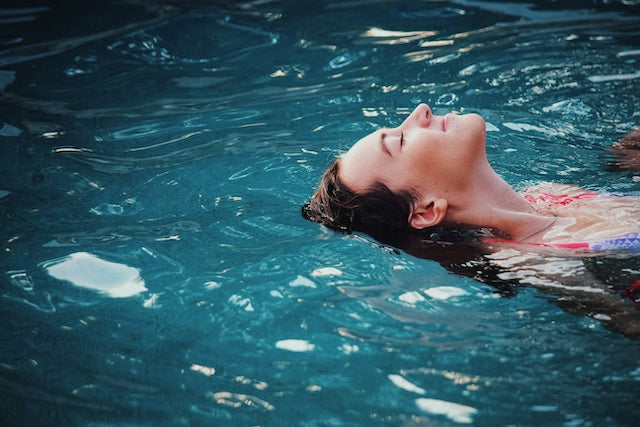How to Protect Your Hair from Damage When Swimming: Professional Tips
Posted by MORFOSE COSMETICS

How to Protect Your Hair from Damage When Swimming: Professional Tips
Introduction
Swimming is a refreshing and enjoyable activity that offers numerous benefits for both our physical and mental well-being. However, exposure to chlorinated water, saltwater, and other chemicals can take a toll on the health of our hair. In this comprehensive guide, we will explore expert tips and techniques to help you protect your hair from damage while swimming. By implementing these strategies, you can maintain healthy and lustrous hair, even after regular dips in the pool or ocean.
Understanding the Potential Damage
Before diving into the preventive measures, it's crucial to understand the potential damage that swimming can cause to your hair. Chlorine, which is commonly found in pool water, strips away natural oils from the hair, leaving it dry, brittle, and prone to breakage. Saltwater, on the other hand, can also dehydrate the hair, leading to frizziness and loss of shine. Additionally, both chlorine and saltwater can cause discoloration and fading of color-treated hair.
Preparation Is Key
Wet Your Hair Before Swimming
One effective way to minimize the damage caused by chlorinated or saltwater is to wet your hair thoroughly before entering the pool or ocean. By saturating your hair with fresh water, it creates a barrier and reduces the absorption of harmful chemicals. Consider using a spray bottle filled with water to ensure your hair is evenly dampened from root to tip.
Apply a Protective Leave-In Conditioner
Before swimming, apply a generous amount of leave-in conditioner specifically designed for swimmers. These products create an additional layer of protection and help to prevent chlorine or saltwater from penetrating the hair shaft. Look for leave-in conditioners that contain ingredients like dimethicone or argan oil, as they offer excellent barrier properties.
Shielding Your Hair in the Water
Wear a Swim Cap
One of the most effective ways to safeguard your hair while swimming is to wear a swim cap. Swim caps provide a physical barrier between your hair and the water, shielding it from the damaging effects of chlorine or saltwater. Opt for a latex or silicone cap for maximum protection. Additionally, wearing a swim cap can also help keep your hair out of your face, allowing you to swim more comfortably.
Rinse Your Hair Immediately After Swimming
After your swimming session, it's crucial to rinse your hair thoroughly with fresh water as soon as possible. This helps to remove any residual chlorine or saltwater, minimizing its prolonged contact with your hair. Use lukewarm water to rinse your hair, as hot water can strip away natural oils and cause further dryness.
Use a Clarifying Shampoo
To effectively eliminate chlorine or saltwater buildup, incorporate a clarifying shampoo into your hair care routine. Clarifying shampoos are specifically formulated to remove impurities, chemicals, and residues that regular shampoos may not be able to eliminate. However, it's essential to use clarifying shampoos in moderation, as excessive use can lead to dryness. Aim to use them once a week or as needed.
Deep Conditioning and Repairing Treatments
Hydrate Your Hair with Deep Conditioning
Moisturizing your hair is crucial to replenish lost moisture and prevent dryness caused by swimming. Deep conditioning treatments are highly effective in restoring moisture and nourishing the hair. Look for deep conditioning masks or treatments that contain ingredients such as shea butter, coconut oil, or hyaluronic acid. These ingredients provide intense hydration and help repair damaged strands.
Restore Hair Health with Protein Treatments
Swimming can weaken the protein structure of the hair, leading to increased vulnerability to breakage. Protein treatments help to strengthen and fortify the hair shaft, minimizing the risk of damage. Look for protein-rich hair masks or treatments that contain ingredients like keratin or hydrolyzed silk. These treatments will help restore the natural strength and resilience of your hair.
Styling Tips for Swim-Friendly Hair
Protective Hairstyles
To further protect your hair from damage while swimming, consider styling it in protective hairstyles. Braids, buns, or ponytails can help minimize the exposure of your hair to water, reducing the risk of chlorine or saltwater absorption. Additionally, these hairstyles also help to prevent tangling and breakage caused by water friction.
Limit Heat Styling
Excessive heat styling can exacerbate the damage caused by swimming. Give your hair a break from hot tools like blow dryers, straighteners, or curling irons. Instead, embrace your hair's natural texture or opt for heatless styling techniques such as air-drying, braiding, or using foam rollers. This allows your hair to recover and maintain its health and strength.
Conclusion
Swimming can be enjoyed without compromising the health and beauty of your hair. By following the professional tips and techniques outlined in this article, you can protect your hair from damage caused by chlorine or saltwater. Remember to wet your hair before swimming, apply a protective leave-in conditioner, and rinse your hair immediately afterward. Wearing a swim cap, using a clarifying shampoo, and implementing deep conditioning and repairing treatments are also crucial steps. Finally, embrace swim-friendly hairstyles and limit heat styling to maintain the vitality of your hair. With these strategies, you can enjoy your swim sessions while keeping your hair healthy, strong, and radiant.


